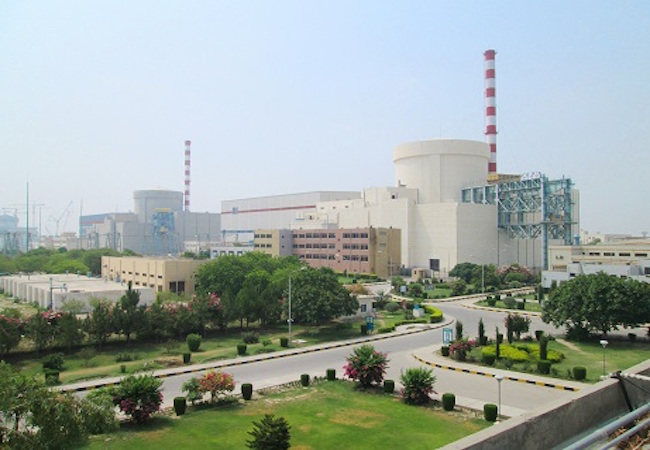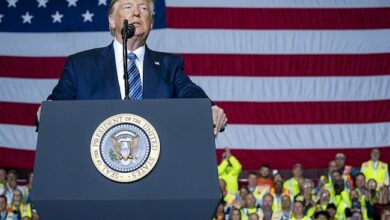
By Shahzadi Tooba Hussain Syed
The focus of the international community has always been to ensure that nuclear energy is used peacefully and safely. The ultimate objective of the international community is the fulfilment of general and complete disarmament on global level. Concern about the potential military use of nuclear material, the development of international trade in nuclear material and related equipment, and the entry into force of certain international treaties have led to the establishment of systems of international safeguards.
The IAEA is an independent intergovernmental organization consisting of over 150 Member States and a Secretariat headed by the Director General. The fundamental objective of the IAEA, as set out in Article II of its Statute, is to “seek to accelerate and enlarge the contribution of atomic energy to peace, health and prosperity throughout the world,” and to provide credible assurance to the international community that nuclear material and other specified items are not diverted from peaceful nuclear uses. Through safeguards, the IAEA is able to provide credible assurances that States are honoring their international obligations to use nuclear material only for peaceful purposes. Its independent verification work allows the IAEA to play an indispensable role in deterring the spread of nuclear weapons. Through early detection of any diversion of nuclear material or misuse of technology, the IAEA can alert the world to potential proliferation. The safeguards is basically a set of measures against the use of nuclear material, facilities and equipment for the development of nuclear weapons and other nuclear explosive devices. IAEA has served as a focal point so as to accelerate and enlarge contribution of atomic energy to peace, health and prosperity throughout the world and to ensure so far as it is able, that the assistance provided by it or on its request or under its supervision or control is not used in such a way as to further any military purpose through the implementation of its safeguards system.
However, the safeguards provisions of the Statute are not self-executing. A State is not bound to accept safeguards simply by virtue of becoming a Member of the IAEA. For that matter, safeguards can be implemented in States which are not Members of the IAEA. What is required for the implementation of safeguards is the consent of the State concerned, and that consent is most commonly manifested in the conclusion of a safeguards agreement with the IAEA. The type of safeguards agreement concluded with the State depends on the nature of the State’s basic undertaking.
There are mainly three types of Safeguards Agreements in the IAEA Safeguard system including: (i) ‘Comprehensive Safeguards Agreements’ (CSAs), which are also known as ‘Full Scope Safeguards’ Agreements, (ii) ‘Item-specific’ or ‘facility-specific’ Safeguards Agreements, and (iii) ‘Voluntary Offer Agreements’ (VOAs). In addition, to strengthen the overall safeguards system, another legal document known as ‘Additional Protocol’ has also been introduced in the 1990s.
The CSAs follows the structure and content set out in Agency document INFCIRC/153 (Corr.) and cover all nuclear material in a State. Under such an agreement, the State undertakes to accept Agency safeguards on all source or special fissionable material in all peaceful nuclear activities within the territory of the State, under its jurisdiction, or carried out under its control anywhere. Almost all the Non-Nuclear Weapon States pursuant to their obligation under the NPT have concluded the Comprehensive Safeguards Agreements. Comprehensive safeguards agreements are also required under other bilateral or multilateral arrangements such as the States, which come under Nuclear Weapon Free Zones.
Based on the provisions in the IAEA document, INFCIRC/66/Rev.2, ‘item-specific’ or ‘facility-specific’ safeguards agreements are applied only to specific items such as the nuclear material, facilities, equipment and/or materials specified in an agreement. These agreements are more stringent than the CSA: Safeguards applied to non-nuclear material, as well (e.g. heavy water, reactor grade graphite), heavy water production plants and applied in perpetuity. Only three countries, namely, Pakistan, India and Israel who are also not party to the NPT have item-specific safeguards.
The NWS or P-5 (namely, China, France, Russia, United Kingdom and the United States) have concluded safeguards agreements under which they have voluntarily offered nuclear material and/or facilities. These agreements are called ‘Voluntary Offer Safeguards Agreements (VOAs). VOAs follow the format of agreements based on INFCIRC/153 (Corr.), but vary in the scope of materials and facilities covered, e.g. excluding those with national security significance. Under the VOAs possibility of withdrawing of nuclear material and facilities from safeguards also exist.
To further strengthen the safeguards measures and to provide the legal basis to the IAEA for verification of the correctness and completeness of States’ declarations under comprehensive safeguards agreements the concept of Additional protocol was introduced in 1990s. The Additional Protocol (AP) is thus complementary to the aforementioned safeguards agreements. The AP provides access to IAEA inspectors to all components or segments of a State’s fuel cycle–including uranium mines, fuel fabrication and enrichment plants, and nuclear waste sites – as well as to any other location where nuclear material is or may be present. Under the AP, a State is required to provide the IAEA inspectors, access to all buildings on a nuclear site on a very short notice of about 24 hours. The AP also has provisions for wide area environmental monitoring. Further provisions include the use of internationally established communications systems, including satellite systems and other forms of telecommunication; issuance of multiple entry visas (valid for at least one year) for IAEA inspectors; provision of information about the research and development activities in a State related to its nuclear fuel cycle, and on the manufacture and export of sensitive nuclear-related technologies.
Pakistan is amongst the category of States that are not party to the Treaty on the Non-Proliferation of Nuclear Weapons (NPT). The rights and obligations of the IAEA and Pakistan under the safeguards agreements for this category of states are based on guidelines contained in Safeguards Document (INFCIRC/66/Rev.2 or its earlier versions) adopted by the IAEA Board of Governors. Agreements in this category cover only specified facilities and materials. Assurances by the IAEA are necessarily limited to the Safeguarded facilities or materials and do not extend to cover the totality of the State’s nuclear activities. As per this model the item-specific safeguards are applied to Pakistan’s nuclear facilities. Pakistan has the following facilities under IAEA safeguards:
| S.# | Facility | Agency Publication | Type of Agreements | Date of Signing |
|---|---|---|---|---|
| 1. | Pakistan Research Reactor-1 (PARR-1) | INFCIRC/34 | Trilateral | March 5, 1962 |
| 2. | Karachi Nuclear Power Plant (KANUPP) | INFCIRC/116 | Trilateral | June 17, 1968 |
| 3. | Karachi Nuclear Power Plant (KANUPP) | INFCIRC/135 | Trilateral | October 17, 1969 |
| 4. | Fuel Reprocessing Plant | INFCIRC/239 | Trilateral | March 18, 1976 |
| 5. | Hawks Bay Depot | INFCIRC/248 | Bilateral | March 2, 1977 |
| 6. | Pakistan Research Reactor-2 (PARR-2) | INFCIRC/393 | Bilateral | September 10, 1991 |
| 7. | Chashma Nuclear Power Plant-1 (C-1) | INFCIRC/418 | Bilateral | February 24, 1993 |
| 8. | Chashma Nuclear Power Plant-2 (C-2) | INFCIRC/705 | Bilateral | February 22, 2007 |
India initially indicated that it would only accept voluntary safeguards agreements for civilian nuclear facilities of the type that the IAEA had in place in the five NPT- recognized nuclear weapon states. The voluntary arrangement would allow India to add and remove at will facilities that were subject to IAEA facility- specific safeguards. This would keep open the possibility that a civilian nuclear facility could be reassigned to the country’s military program. It would also help to overcome the reluctance of India’s nuclear establishment to place more of the country’s nuclear facilities under civilian safeguards.
India-specific safeguards agreement is based on the IAEA document, INFCIRC/66/Rev.2. This Agreement (INFCIRC/754) is not only “India-specific” but is also an ‘Umbrella’ Agreement in the sense that all nuclear activities and plants (including the current and future) have been covered in one document. Usually a safeguards agreement with the IAEA is concluded for a single type of plant—e.g., nuclear power plants, fuel enrichment plants, or reprocessing plants, etc. However, India managed to lump together in one single document all the safeguards provisions of different programs and facilities including nuclear power plants, conversion, enrichment, fuel fabrication and reprocessing plants. An Annexure to the Agreement has been agreed upon whereby India would inform the Agency about its facilities which would be brought under safeguards. The India-specific Safeguards Agreement acknowledges that India “shall file with the Agency a Declaration, based on its sovereign decision to place voluntarily its civilian nuclear facilities under agency safeguards in a phased manner.”
Furthermore, “India on the basis of its sole determination, shall notify the Agency in writing of its decision to offer for Agency safeguards a facility identified by India…”. While formulating its separation plan for civil and military facilities and activities, India had declared that it will only bring 14 out of 22 NPPs under IAEA safeguards. It may be inferred that the remaining 8 NPPs could be used to generate weapon-grade plutonium. Furthermore, India refused to bring the fast breeder reactors and related activities under IAEA safeguards. India also did not agree to bring all future nuclear power plants under IAEA safeguards. Only those NPPs will be subjected to IAEA safeguards, which India would submit for such purpose, leaving India the option to keep some of its future NPPs for military purposes.
IAEA, if not fully but somehow failed to achieve the main objective of these safeguards agreements. If India didn’t deceive the world that it is using its program for peaceful purposes this nuclear race wouldn’t have started in South Asia. Now it would be very difficult for IAEA to enforce the agreements without discrimination.




